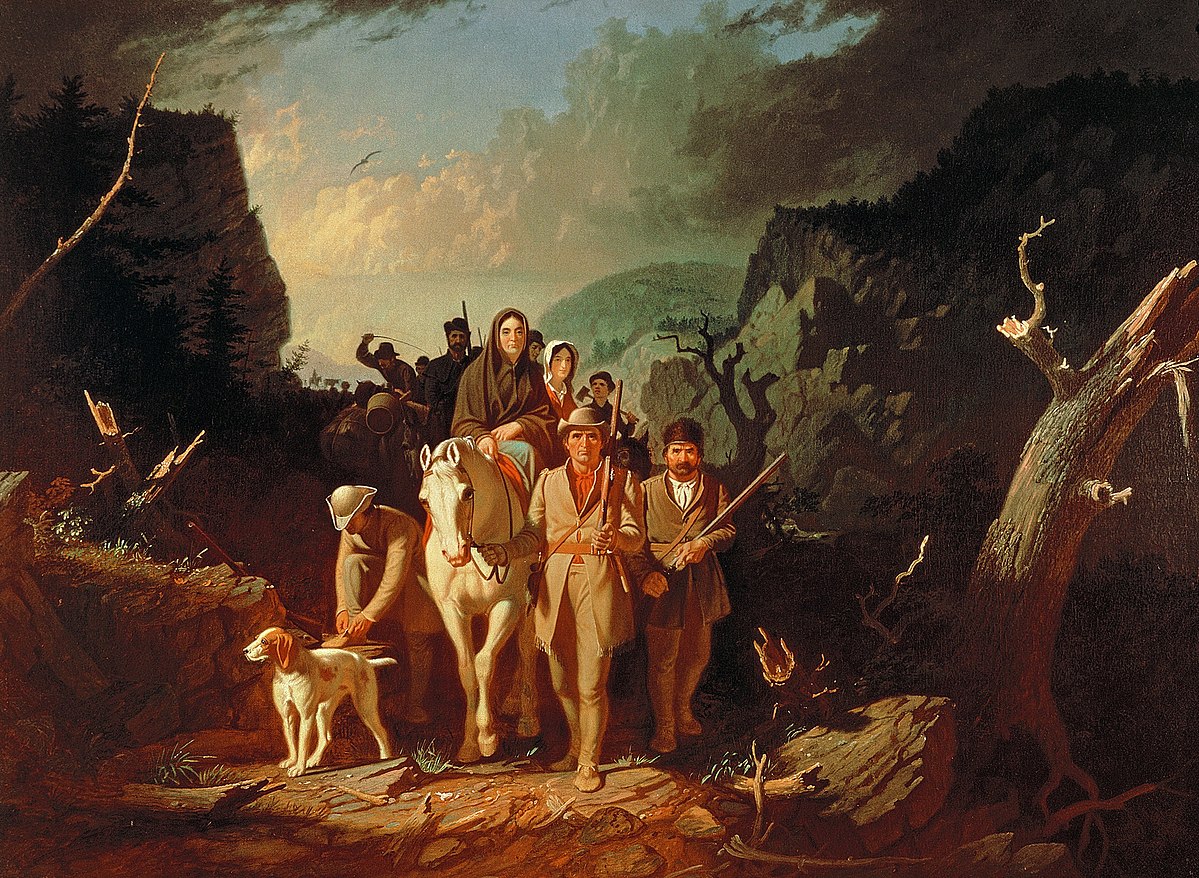
Cherokee–American Wars
Virginia, USAThe Cherokee–American wars, also known as the Chickamauga Wars, were a series of raids, campaigns, ambushes, minor skirmishes, and several full-scale frontier battles in the Old Southwest[20] from 1776 to 1794 between the Cherokee and American settlers on the frontier. Most of the events took place in the Upper South region. While the fighting stretched across the entire period, there were extended periods with little or no action.
The Cherokee leader Dragging Canoe, whom some historians call "the Savage Napoleon",[21] and his warriors, and other Cherokee fought alongside and together with warriors from several other tribes, most often the Muscogee in the Old Southwest and the Shawnee in the Old Northwest. During the Revolutionary War, they also fought alongside British troops, Loyalist militia, and the King's Carolina Rangers against the rebel colonists, hoping to expel them from their territory.
Open warfare broke out in the summer of 1776 in the Overmountain settlements of the Washington District, mainly those along the Watauga, Holston, Nolichucky, and Doe rivers in East Tennessee, as well as the colonies (later states) of Virginia, North Carolina, South Carolina, and Georgia. It later spread to settlements along the Cumberland River in Middle Tennessee and in Kentucky.
The wars can be divided into two phases. The first phase took place from 1776 to 1783, in which the Cherokee fought as allies of the Kingdom of Great Britain against the American colonies. The Cherokee War of 1776 encompassed the entirety of the Cherokee nation. At the end of 1776, the only militant Cherokee were those who migrated with Dragging Canoe to the Chickamauga towns and became known as the "Chickamauga Cherokee". The second phase lasted from 1783 to 1794. The Cherokee served as proxies of the Viceroyalty of New Spain against the recently formed United States of America. Because they migrated westward to new settlements initially known as the "Five Lower Towns", referring to their location in the Piedmont, these people became known as the Lower Cherokee. This term was used well into the 19th century. The Chickamauga ended their warfare in November 1794 with the Treaty of Tellico Blockhouse.
In 1786, Mohawk leader Joseph Brant, a major war chief of the Iroquois, had organized the Western Confederacy of tribes to resist American settlement in Ohio Country. The Lower Cherokee were founding members and fought in the Northwest Indian War that resulted from this conflict. The Northwest Indian War ended with the Treaty of Greenville in 1795.
The conclusion of the Indian wars enabled the settlement of what had been called "Indian territory" in the Royal Proclamation of 1763, and culminated in the first trans-Appalachian states, Kentucky in 1792 and Ohio in 1803.
